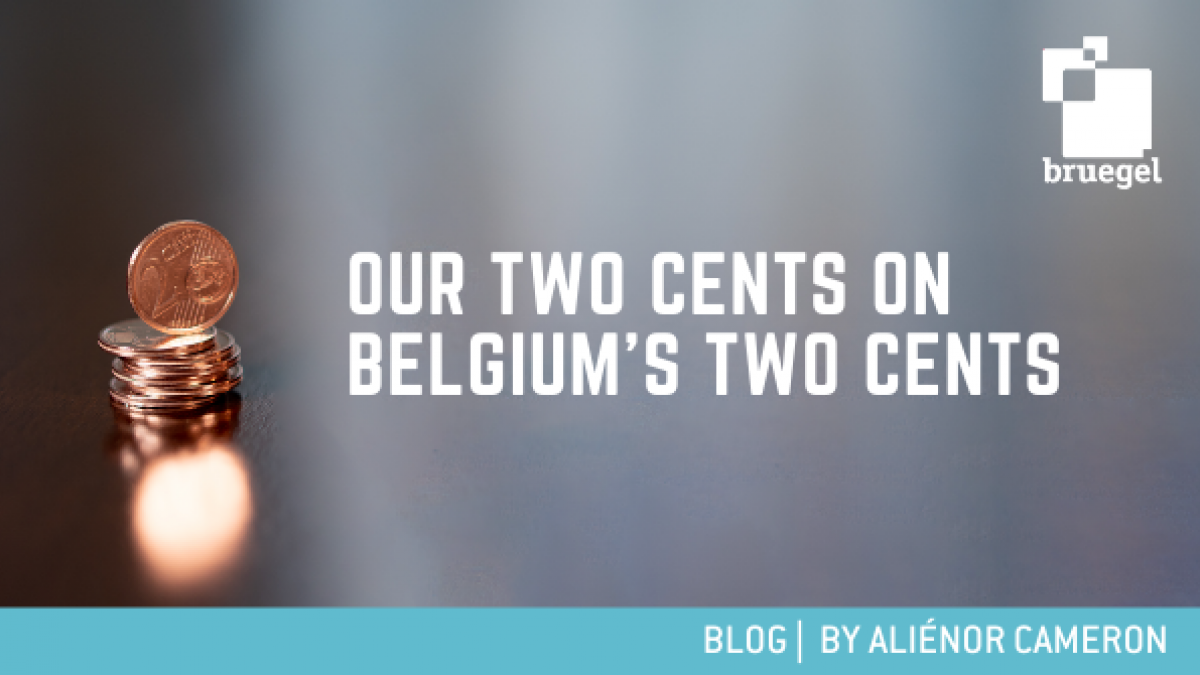Our two cents on Belgium’s two cents
While the penny is still well and alive in the US, some countries are deciding to do away with their smallest monetary units for this very reason. Bel

“When people start leaving a monetary unit at the cash register for the next customer, the unit is too small to be useful.” When making this point in his 2006 list of New Year’s resolutions, Gregory Mankiw vowed to vote for the elimination of the penny. In his view, its value was so small that it no longer served the very purpose for which currencies were created: to facilitate exchange.
While the penny is still well and alive in the US, some countries are deciding to do away with their smallest monetary units for this very reason. Belgium is one such country.
In November 2018, Former Federal Economy Minister Kris Peeters announced that as of December 1st 2019, all businesses would have to round off their customers’ final due to the nearest 5-cent value for all cash payments at a point of sale. While businesses are still required to accept 1- and 2-cent coins, the aim is to remove them from circulation in the long run.
What is the motivation behind this? According to the Belgian government, these small-unit coins are costly and redundant.
Consumers in Belgium tend to find them difficult to use. When asked the question “with which of the following euro coins do you have particular difficulties?”, the proportion of Belgians answering 1- and 2-cent coins is far above the Euro Area average. In fact, in 2018, nearly three-quarters of them were in favour of abolishing 1- and 2-cent coins and requiring that stores round the final price of purchases to the nearest value of 5 cents.
Business-owners also find that counting, sorting and transporting these coins is costly and unnecessarily time-consuming, especially given the very little value they hold. Additionally, they can hold up lines at cash registers due to the difficulty people may have in differentiating between 1-, 2- and 5-cent coins. The difficulties consumers and businesses have when handling these small, copper-coated coins restricts their circulation, with most of them ending up at the bottom of drawers, pockets and untouched piggybanks.
Their high loss rate also has a significant cost for the Treasury. A study by the National Bank of Belgium found that in 2014, producing a single 1- or 2-cent coin cost the Royal Belgian Mint 2 to 2,5 cents, to which transport and stocking expenses have to be added. The demand for these coins has been steadily increasing since the introduction of the euro, mostly because businesses need them to give their customers exact change, but hardly receive any back as payment. This even led to a shortage in small-unit coins in 2018, which pushed the Federal Public Service for Finance to think of potential solutions.
Years before this, two towns in Belgium ran an experiment which could help with these troubles. For a period of 7 months, 200 businesses in Waregem and Visé rounded cash payments to the nearest multiple of 0.05. At the end of the trial period, 80% of business owners and 78% of consumers were in favor of this rounding method, which eliminated the need for 1- and 2-cent coins.
This practice has also been implemented in other European countries. For instance, Finland has never used 1- and 2-cent coins. Before euro bills and coins were even introduced in 2002, the country passed a law which required businesses to round cash payments to the nearest value of 5 cents. Since 2004, most Dutch businesses also practice rounding, following the publication of an expert group’s recommendations. However, this is not enforced by law like in Finland.
So why haven’t all Euro countries done away with their loose change? The European Commission studied this very question in a 2013 Communication to the Parliament and the Council. Though they concluded that 1- and 2-cent coins were undeniably a loss-making activity in the euro area, they also found that the general public had a strong attachment to these small denominations, and a fear that their removal might cause inflation.
Belgians do not particularly share this attachment to the euro’s smallest coins, but the question of a potential inflationary effect were they to be taken out of circulation is a concern. A 2006 Flash Eurobarometer found that nearly 4 in 5 Belgian respondents believed that removing 1- and 2-cent coins from circulation would lead to a price increase.
The National Bank of Belgium’s study looks into whether these fears have any founding, or if they are merely a mismatch between perception and reality. They begin by hypothesizing the mechanisms through which rounding could have an effect on inflation, be it positive or negative.
On the one hand, business-owners could act exactly as consumers expect them to: increase their prices in order to maximize profits, thus mechanically increasing inflation.
On the other, businesses will have less expenses as a result of no longer needing 1- and 2-cent coins, which could allow them to lower their prices – especially if the market they operate in is highly competitive. This would have the opposite effect on prices and actually slow down inflation.
Though the authors of the study do not draw any causal conclusion from it, they look into the Dutch example. It appears that there was no peak in inflation after rounding was introduced in 2004. However, Eurobarometer data shows that there was a sharp increase in public satisfaction towards the number of euro coins in use in the years after this.
Looking at countries outside of the Euro Area, the Czech Republic also withdrew its smallest-denomination coins in 2008 without appearing to trigger any inflationary effect. The same goes for Canada, which eliminated its pennies in 2013. Before implementing the policy, the Bank of Canada estimated that “any impact on inflation would be insignificant and more likely non-existent”.
The question is whether this will also hold for Belgium. In its study, the National Bank of Belgium discusses and updates a scenario analysis originally done by a steering group in 2004. The initial results suggested an effect of around 0.11% on inflation, and while the authors do not fully update these results in their 2014 report, they argue that the effect is likely even smaller at the time they are writing, for two reasons.
First, cumulated inflation since 2003 has mechanically reduced the relative weight of rounding, since the price base is higher. Second, since inflation remained overall rather high between 2004 and 2014 – excluding a significant dip between 2009 and 2010 – 1- and 2-cent coins lost even more of their already weak face value. This probably led some businesses to “naturally” round some of their prices to the closest value of 0.05, as they had no use for the precision of smaller denominations. As such, it is likely there were less prices ending in values other than 0.00 and 0.05 in 2014 than there were in 2004, making the effect of rounding on prices even less significant.
Both of these arguments are even truer today than in 2014, cumulated inflation since 2004 having increased and inflation in Belgium having remained positive since then. Additionally, businesses have been legally authorized to practice rounding since 2014. Though it is estimated that only about a third of all businesses actually did this before December 2019, this also undoubtedly reduces any potential inflationary effect.
The European Commission led its own study in 2013 on the inflationary effect that taking 1- and 2-cent coins out of circulation could have, at the scale of the whole Euro Area, and also found that it would be negligible. Today, it is even considering a proposal to phase out – and ultimately fully withdraw – these coins.
The Commission, however, does warn that this policy could have a distortionary effect on perceived inflation. Policymakers want to avoid a further break in the relationship between perceived and measured inflation, as appears to have happened when the euro was introduced. As such, rounding should be accompanied by a strong communication campaign to inform the public.
This has indeed been done in Belgium, where posters of smiling 1- and 2-cent-coin characters can be found plastered across the country, in shops and advertising spaces, with the slogans “On dit “oui” à l’arrondi” and “Tijd om af te ronden”, meaning “We say yes to rounding”. With little to no risk of this policy having any major inflationary effect, it looks like as of now, there is no need for a round table on rounding.



